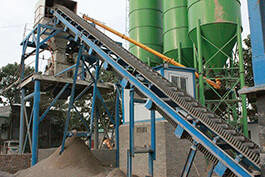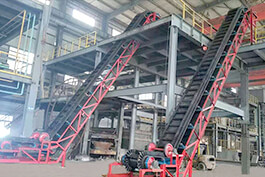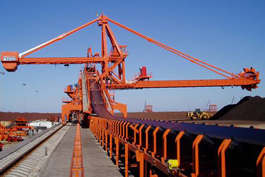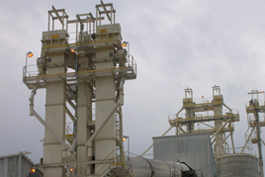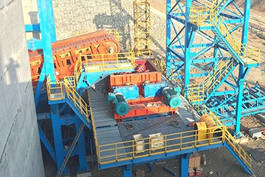Sidewall belt conveyor is suitable for transporting easily scattered powder, granular, small block, paste and liquid materials. It has the characteristics of wide range of use, small footprint, large throughput and high efficiency.
1.In the process of transportation, the base belt of the conveyor mainly bears the tension, which plays an important role in its use effect. If the rigidity is small, the conveyor belt will produce transverse deformation and cause the phenomenon of spreading materials. Generally, the number of core layers is at least 6.
2.Look at the cleat and skirt, according to the conveyor throughput to select, determine the skirt height, cleat spacing size, effective belt width size and other factors. Sidewall belt conveyor can work in 0° ~ 90° dip angle environment. Reach the transmission angle that cannot reach, further reduce the project cost, shorten the transportation distance, save manpower.
3.
Sidewall belt conveyor over 70 degrees angle should be used to cover the belt, (the benefits of using cover belt to prevent leakage caused damage to the base belt; At the same time, it can also increase the volume of materials).
4.The requirement for the pulley of the sidewall belt conveyor is much higher than flat belt conveyor, in the case of the same type of belt,it is much larger than the pulley used on flat belt.
5.Base belt: the base belt of the
sidewall belt conveyor mainly bears the tension, but its transverse rigidity also plays a great role in the use of performance and effect. If the rigidity of the conveyor belt is too small, the conveyor belt will produce transverse deformation and lead to the phenomenon of spreading materials. (If CC-56 cotton canvas core layer conveyor belt is selected, the tearing strength is 56N/mm, the number of core layers is at least 6 layers -- including 6 layers, the thickness of upper rubber = more than 4.5mm, the thickness of lower rubber = more than 1.5mm).
6.Cleat, skirt: when choosing cleat and skirt, the throughput of conveyor should be considered first, such as skirt height, cleat spacing and effective belt width.


.jpg)

